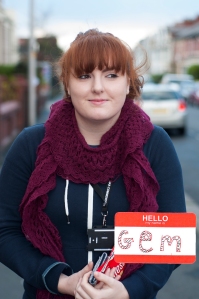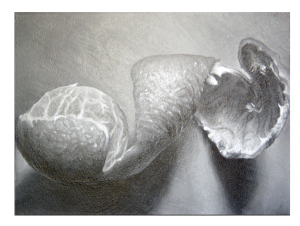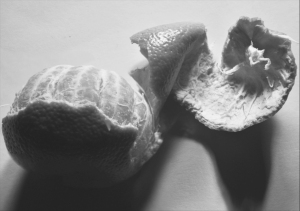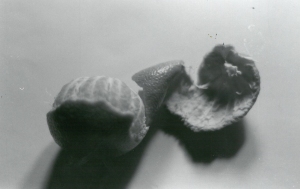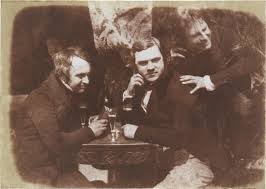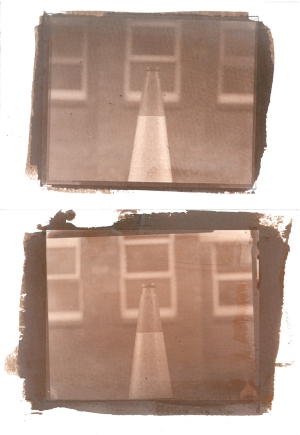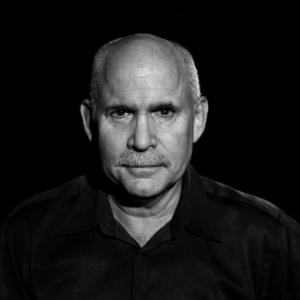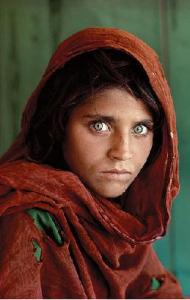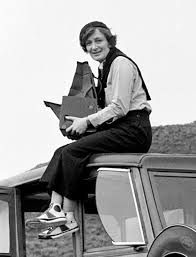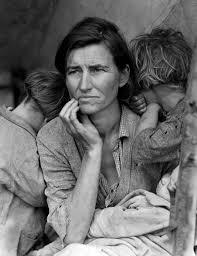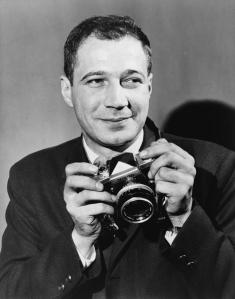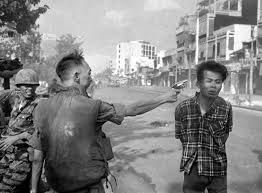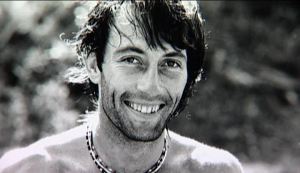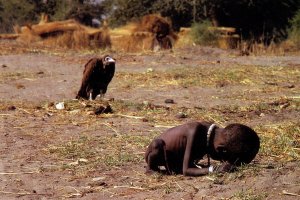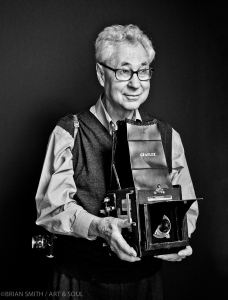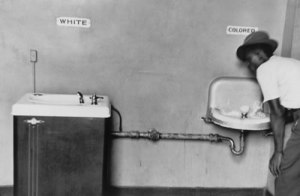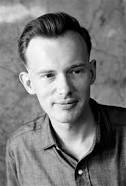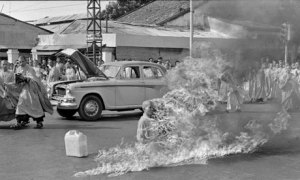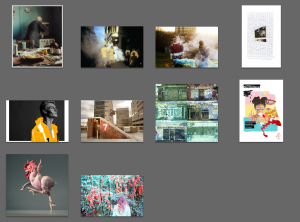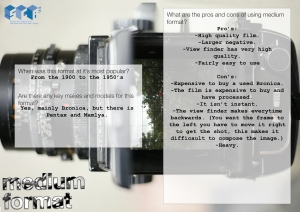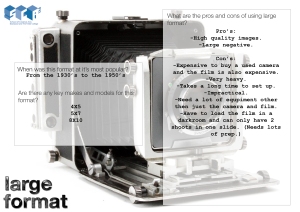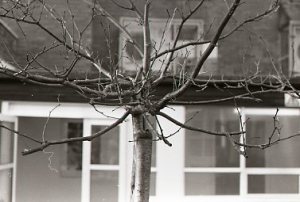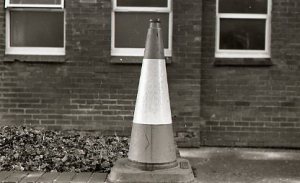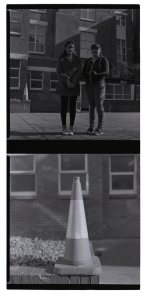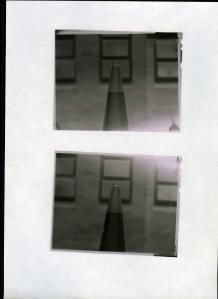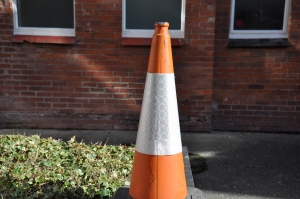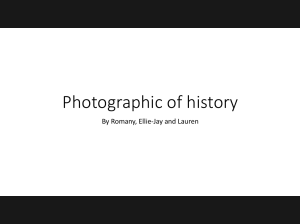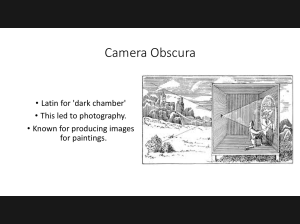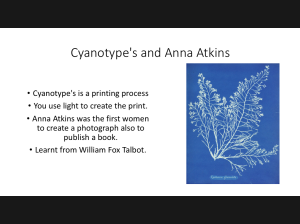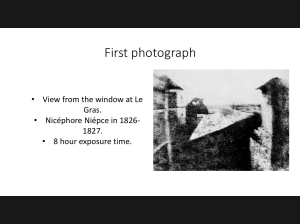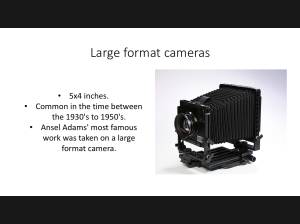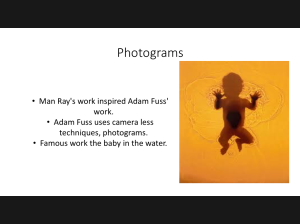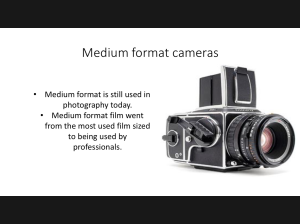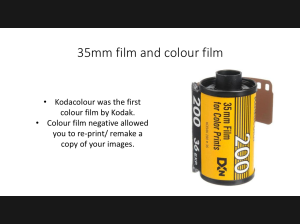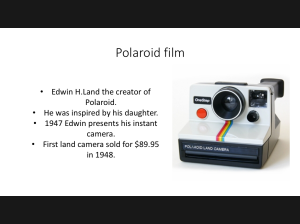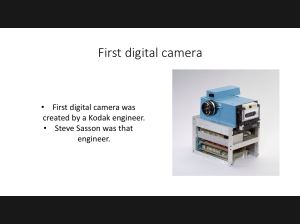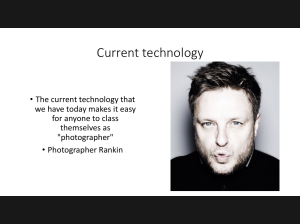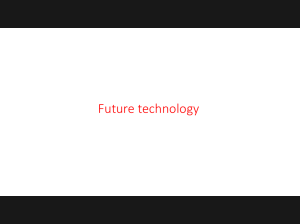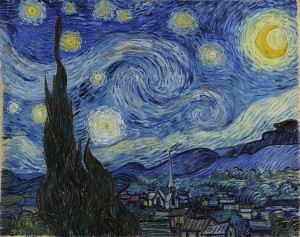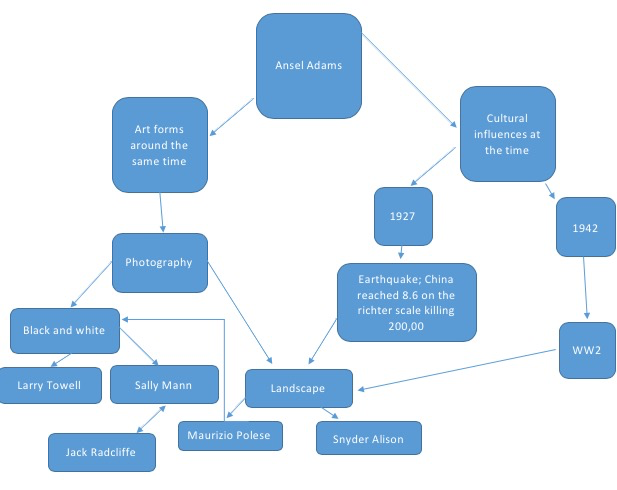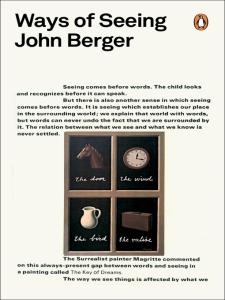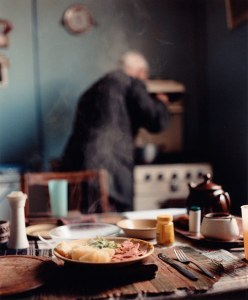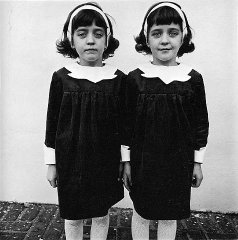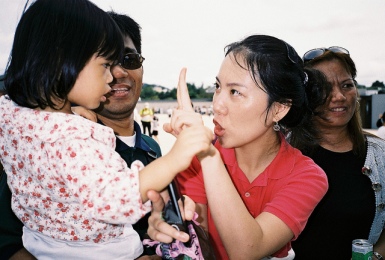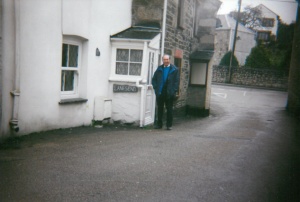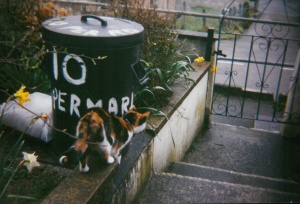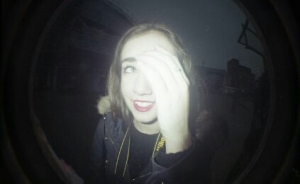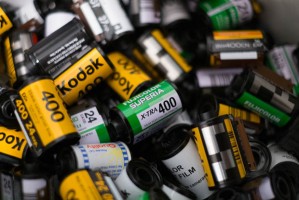Favourite format: My favourite format is film.
Benefits of this format: A benefit to this format is having that hard copy of the image so you can re-use again and again, until you lose it but then you can/maybe will always find it again unlike digital when it gets deleted its gone forever unless backed up.
Negatives related to this format: Can’t see your images right away. Its slow/ can take its time to shoot, process and print. Not always 100% guaranteed to have your images on the film. When processed and you have your film back if it gets scratched the film is damaged and its hard to fix. Only limited to 24 or 36 images per roll (35mm film) 12 images (medium format) 2 pieces of film per slot (larger format.)
What makes this your favourite format?: I feel that film is my favourite format because you get a hard copy of your image and I love the excitement I get when I’m looking at my film on the light box seeing how my images have come out.
Least favourite format: Larger format, until I used it the other week and processed the film myself, now I am warming to it because its another film based photography and because of that I would say that at this moment in time digital would be my least favourite.
Benefits of this format: You get to see your images right away after taking them. You can edit them, such as crop them or turn them black and white from the back of the camera. Can delete an image if I don’t like it and it won’t use up a space like on film. High quality images.
Negatives related to this format: If you delete an image you can’t get them back if you delete them from the camera. The camera’s are expensive to buy but in the long run they are worth their money.
What make this your least favourite format: Its only my least favourite because I love shooting film so much.
Now using my own images from the two formats i have talked about film (35mm) and digital I am going to compare them.
(First image of the sea is 35mm film and the second image is digital)
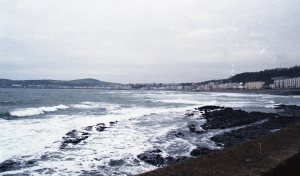 These to images are very different and their format does help with this. The photograph of the sea was taken on 35mm film and I think the coldest/ tint of blue helps to soften the image and just add that little something to the image. The other image the portrait of Gemma was taken on digital and you can tell because of how crisp the image is and also the sharpness in Gemma her self.
These to images are very different and their format does help with this. The photograph of the sea was taken on 35mm film and I think the coldest/ tint of blue helps to soften the image and just add that little something to the image. The other image the portrait of Gemma was taken on digital and you can tell because of how crisp the image is and also the sharpness in Gemma her self.
